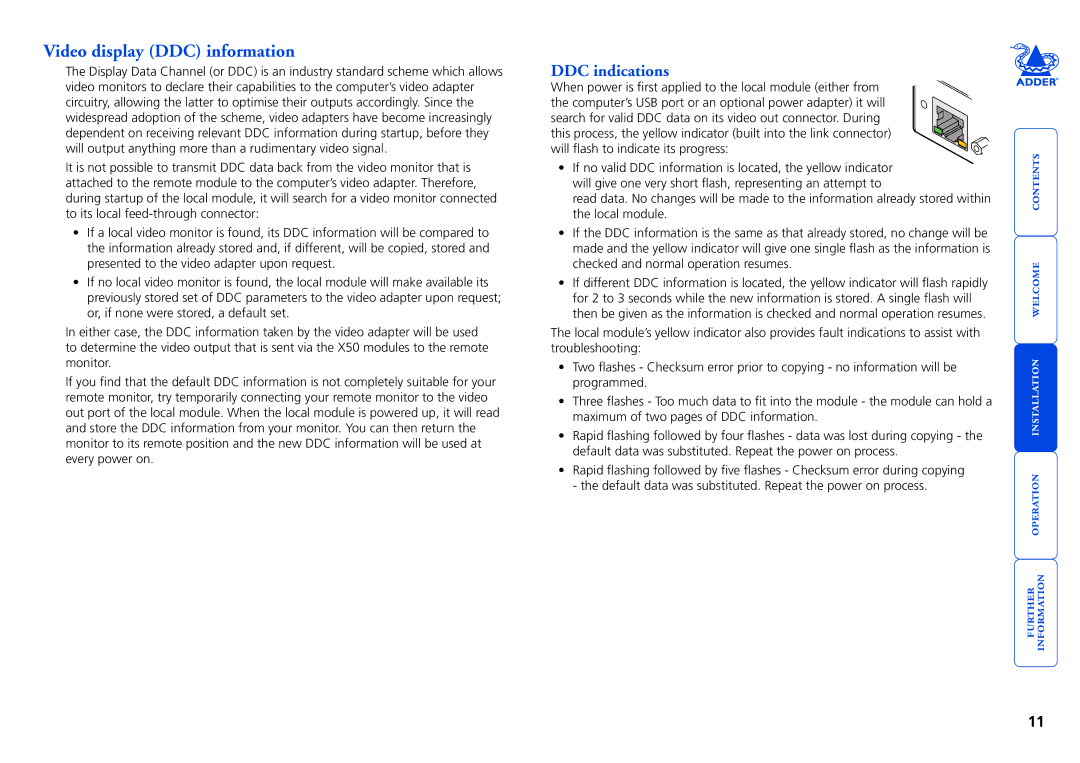
Video display (DDC) information
The Display Data Channel (or DDC) is an industry standard scheme which allows video monitors to declare their capabilities to the computer’s video adapter circuitry, allowing the latter to optimise their outputs accordingly. Since the widespread adoption of the scheme, video adapters have become increasingly dependent on receiving relevant DDC information during startup, before they will output anything more than a rudimentary video signal.
DDC indications
When power is first applied to the local module (either from the computer’s USB port or an optional power adapter) it will search for valid DDC data on its video out connector. During this process, the yellow indicator (built into the link connector) will flash to indicate its progress:
O |
|
TE | LIN |
| K |
It is not possible to transmit DDC data back from the video monitor that is attached to the remote module to the computer’s video adapter. Therefore, during startup of the local module, it will search for a video monitor connected to its local
•If a local video monitor is found, its DDC information will be compared to the information already stored and, if different, will be copied, stored and presented to the video adapter upon request.
•If no local video monitor is found, the local module will make available its previously stored set of DDC parameters to the video adapter upon request; or, if none were stored, a default set.
In either case, the DDC information taken by the video adapter will be used to determine the video output that is sent via the X50 modules to the remote monitor.
If you find that the default DDC information is not completely suitable for your remote monitor, try temporarily connecting your remote monitor to the video out port of the local module. When the local module is powered up, it will read and store the DDC information from your monitor. You can then return the monitor to its remote position and the new DDC information will be used at every power on.
•If no valid DDC information is located, the yellow indicator will give one very short flash, representing an attempt to
read data. No changes will be made to the information already stored within the local module.
•If the DDC information is the same as that already stored, no change will be made and the yellow indicator will give one single flash as the information is checked and normal operation resumes.
•If different DDC information is located, the yellow indicator will flash rapidly for 2 to 3 seconds while the new information is stored. A single flash will then be given as the information is checked and normal operation resumes.
The local module’s yellow indicator also provides fault indications to assist with troubleshooting:
•Two flashes - Checksum error prior to copying - no information will be programmed.
•Three flashes - Too much data to fit into the module - the module can hold a maximum of two pages of DDC information.
•Rapid flashing followed by four flashes - data was lost during copying - the default data was substituted. Repeat the power on process.
•Rapid flashing followed by five flashes - Checksum error during copying - the default data was substituted. Repeat the power on process.
operation installation welcome contents
11
